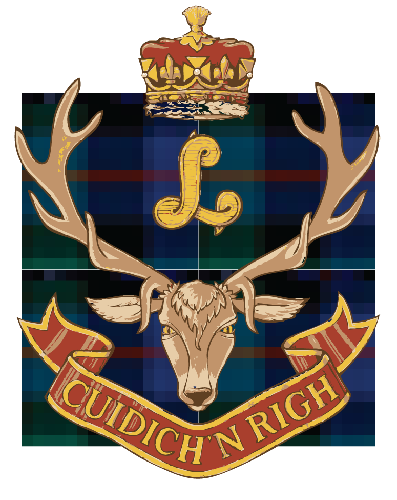In Remembrance of Canadians Standing in Unity
Friday, November 11, 1994 | Nigel Brodeur, Financial Post On Remembrance Day it is fitting that we discover anew a key element in how Canada came to be united, and how it is that no Canadian has the right to undermine or destroy that unity.
One recent evening, the Royal United Services Institute of Vancouver Island met to listen to a handful of Canadian Navy and Army veterans of the Sicilian and Italian campaigns in the Second World War – a group assembled and introduced by Maj.–Gen. Jim Tedlie, a veteran of the Northern European campaign.
The speakers were in their 70s, as were most of the listeners. There were no young faces in the audience. That was a pity – for you see, the memories recounted were not about old men, but about young Canadians and their heroism and sacrifices 51 years ago.
Rear Admiral John Charles spoke about the support and protection the allied naval forces gave to the landings. Col. Hershell “Snuffy” Smith, Maj. (subsequently High Commissioner) John Dougan, and Maj. Pat Harrison recounted their experiences leading tanks, infantry, and artillery in the battles for Agira and Mount Etna in Sicily, and in Italy during the battles of the Moro River, Ortona, the “Hitler Line” (anchored in the famous Monte Casino), and the Rimini Line.
They quietly recalled ferocious encounters in which squadrons of tanks and companies of gallant soldiers were decimated. They spoke poignantly of the Canadian regiments involved: the Ontario, Calgary, and Three Rivers tank regiments, and the many infantry regiments: the Loyal Edmontons, Seaforths of Canada, Royal 22nd Regiment, Princess Patricia’s Canadian Light Infantry, West Nova Scotias, Hasting & Prince Edwards, Carleton and Yorks and the 48th Highlanders. They voiced their gratitude toward their artillerymen, engineers, signalers and medical corps. And they spoke respectfully, even affectionately, of the brigade, division and corps commanders.
They had special praise for Col. Paul Triquet, the Van Doos’ company commander who earned the Victoria Cross for his bravery in the engagement at Casa Berardi. And Snuffy Smith quietly recalled that night when an elite German paratroop regiment surrounded his few tanks and the remnants of Triquet’s company of Van Doos. When a voice called in German for the Canadians to surrender, it was answered in French by a Canadian voice calling, “F…you, come and get us!”
One could ask, “What’s the relevance of all that to Canadians today?” The answer is quite simple:
Fifty-plus years ago, in a foreign land 3,000 miles away, young Canadians from every province and racial background stood united in battle against a barbaric ideology, and in this instance a soldier from Quebec voiced their unity and heroism. Thus it was that the Canadian unity forged in the crucible of Vimy Ridge in the First World War came to be tested and hardened on the battlefields of Sicily and Italy, just as it was on hundreds of other Second World War foreign battlefields, in the skies above them, and in the oceans linking Canada to those distant lands.
Historian Joseph Schull’s eloquent testimony to Canada’s wartime navy, really applies to them all, regardless of service:
‘They have contributed to the rescue of civilization which, however imperfect, is still better than the barbaric darkness with which it was threatened. They were part, consciously or not, of the mighty drawing-together of the nation; saw on their own bridges, quarterdecks and forecastles its differences of race and outlook melt away in the solvent of common danger. The motivations, which brought them to sea, were as diverse as most men’s, and their ideology was probably no less vague. Certainly they made little high talk in the messdecks and wardrooms of the blacked-out ships. Yet they did, in the fumbling, groping manner of democracies, know their own minds. They fought with clear conscience, and no men anywhere fought better.”
It’s simple, you see. Many years ago brave young Canadian military men and women created Canadian unity through sacrifices that completely dwarf any and all of the actual (or perceived) grievances in Canadian minds today. Their memory calls out to everyone who today advocates Quebec’s separation and to anyone who would put his or her vested interests ahead of our nation’s unity. Their message is clear:
‘You who today live in that beloved Canada for which we sacrificed our youth, our blood, and our lives – you have not earned, and do not own, the right to destroy the unity which we created.”
Financial Post: November 16, 1994 | Ian McCrae, Toronto.
Past Generations Deserve Credit
Thank you Vice-Admiral Brodeur for the closing paragraph of your column, In Remembrance of Canadians Standing in Unity (Nov. 11). Although my parents are veterans, I have never felt such understanding until now of their feelings toward Canadian unity. It is sorrowful that we forget just how great a debt we owe to our parent’s for all we take for granted in the Canada we know today.
Perhaps it was, in one way, easer 50 years ago, when a whole nation could easily recognize the problem and focus their combined energies on fixing it. As Financial Post columnist William Watson once in reference to academics, we Canadians don’t have enough real problems to deal with, so we, through special interest groups, invent problems. Then we make much of these (as Brodeur accurately stated) “perceived grievances,” feeling that this gives our life purpose.
I am going to keep this column and try to teach my own children the lesson contained therein. We are privileged to be Canadian and it is past time for us to accept the responisibility to maintain and grow what Brodeur, my parents, and their generation have bequeathed us: one of the places in the world to live, work, and prosper.

